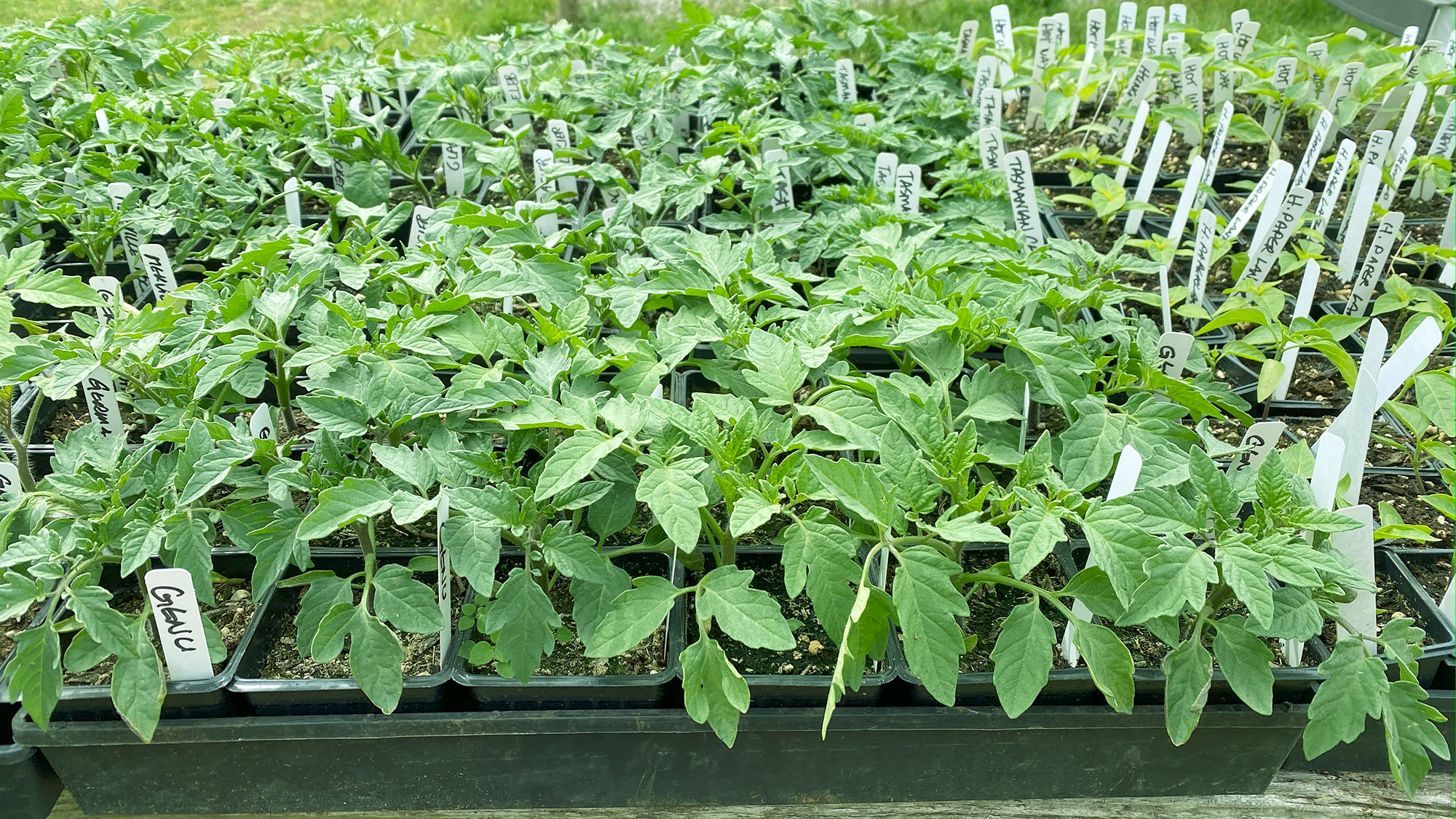Or: Help I planted my seedlings out too early, now what?!?
Look, I get it. That gloriously sunny weekend in late April—with overnight lows of 10°C—whispers sweet lies to your gardening soul. It’s time, it says. Get those tomatoes in the ground.
It is now May 1st, and guess what? Overnight low is 3°C.
What are you going to do? Cry? (Fair.) Replant? (Ugh.) Wish you’d waited and hardened off properly first? (Getting warmer.) Move to the tropics? (Tempting.)
Luckily, I have 3 solutions.
Solution #1: Garbage Can Time Travel
If your tomatoes are already in the ground, don’t panic. Wait until mid-afternoon when the plant has had some sunshine, then gently place a black plastic garbage can over it. The can will soak up warmth during the day and act like a cozy little house overnight. It’s usually tall and wide enough to avoid crushing your plant (and if it’s not, seriously—what are you feeding that thing?).
Take it off in the morning, repeat as needed, and don’t forget to thank a sanitation engineer for the technology.
Solution #2: Go Back in Time and Read This First
This one’s trickier, unless you have access to a DeLorean and a flux capacitor, but I did post this in March for you to consider. Seriously—here’s the deal on when to plant your tomatoes (and other tender crops) outside:
We live on the traditional territories of the K’ómoks First Nation, on Vancouver Island, and our average last frost date is around May long weekend. Sometimes it’s earlier, sometimes it’s later. But if you’re playing plant roulette in April, you’re likely to lose.
Start paying attention to the trends. I’m watching the weather for weeks, looking at overnight lows and wind patterns. I want to see consistent overnight temps of 10°C or more before I even think about hardening off, let alone planting—and I want to be pretty close to May long before I put anything precious in the ground.
Why? Because planting early doesn’t give you a head start—it can actually set you back. Even a few chilly nights at 7°C can stunt your plants enough to ruin production. They might survive, but they won’t thrive. And isn’t thriving the whole point?
Let’s talk cool vs. warm weather crops.
April and May in Canada are moody, unreliable growing partners. Cool weather crops like greens, brassicas, and peas? They’re fine with a little drama.
But warm weather crops ie: tomatoes, peppers, cucumbers, summer and winter squash (most Solanaceae and all Cucurbits)—want to be pampered. They do not enjoy:
- Frost
- Wind
- Cold soil
- Root disturbance
- Being rootbound
- Your impulsive gardening decisions
Cucurbits especially (squash, cukes, melons) hate being started too early and left in tiny pots until they’re rootbound and stressed. That’s not how you get happy, productive plants.
So here’s your cheat sheet:
- Don’t buy starts until you’re ready to plant them.
- Or better yet, preorder from a local farm (hi, still me) so they’re timed just right.
- Ignore the big box stores. They’re betting on your failure. Your suffering = their profit. Don’t give them the satisfaction.
Take a breath. Watch the weather. Harden off when it’s time but… Put your trowel down—for now.
What is hardening off, anyway?
Hardening off is the process of gradually introducing your pampered, greenhouse-grown seedlings to the real world—sun, wind, cooler nights, and general weather nonsense.
Plants raised indoors are like indoor cats: used to cozy, protected environments. Toss them outside without a transition and they might go into shock, stop growing, or even die.
Here’s how to do it:
Start by putting seedlings outside in a sheltered, shady spot for a few hours a day. Increase the time and sun exposure gradually over about a week. Bring them in at night if it’s still cold. Think of it as outdoor bootcamp, but gentle.
This isn’t optional.
Hardening off is the secret handshake between you and a healthy harvest.
Skip it, and your tomatoes will act like Victorian ladies fainting in the sun.
And if you don’t want to do this? Talk to us.
We harden off every plant before it leaves the farm—at the right time, not in April while it’s still cold.
OH WAIT.
Solution #3: Scratch That Garden Itch with less delicate creatures
Go ahead and plant your cool weather crops—peas, spinach, choi, lettuce, baby kale, arugula—they love this stuff. While not the sexy plants, these are the stars of early spring gardening, so get them in the ground and enjoy the quick wins.
Some of these crops are rotational, like cut and come again greens, which means they’ll feed you for 14 days, then make room for something else. As farmers, we replant our leafy greens every couple of weeks to keep a steady supply rolling.
It’s a great way to stay busy while you wait for the warm-weather divas to catch up.
In the meantime, grab a tea and swipe through our catalogue like it’s farm Tinder.
You know you’ve already fallen for that Aleppo pepper.

